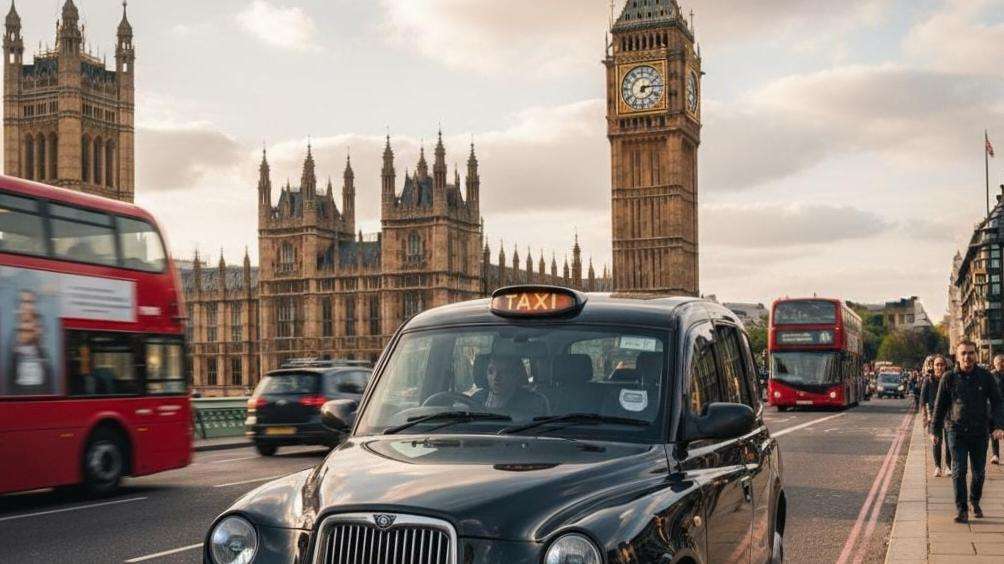As major companies like Waymo and Uber accelerate plans to launch self-driving taxi trials in London by early 2026, the question of who survives the coming transportation revolution is no longer a distant concern, but a looming crisis. Evidence and official statistics strongly suggest that the UK’s regulated private hire vehicle (PHV) market—which includes app-based services like Uber and Bolt—is on a collision course with mass job displacement, while the highly regulated black taxi trade stands a stronger chance of survival.
The most immediate and severe impact is set to hit the vast and rapidly growing private hire sector.
The Scale of the Crisis: Hundreds of Thousands of Jobs at Risk
Latest figures from the Department for Transport (DfT) highlight the sheer number of jobs in the PHV sector that are at high risk of automation. As of April 2024, there were 381,100 licensed taxi and private hire drivers in England.
Crucially, the majority of these are in the PHV sector:
- There were 262,800 PHV-only driver licenses in England (a 14% increase from 2023).
- In contrast, there were only 34,100 taxi-only driver licenses (a 7% decrease from 2023).
- Additionally, there are around 78,000 dual licenses (drivers licensed for both) or other licence types.
The overwhelming majority of the at-risk positions—potentially over 300,000 private hire driver jobs—are dependent on ride-hailing platforms that are openly committed to investing in driverless technology to reduce their largest operational cost: human drivers.
Demographic Impact: A Community Crisis
Compounding the crisis is the fact that the private hire sector is disproportionately reliant on drivers from South Asian communities. London data from Transport for London (TfL) illustrates this stark disparity:
- PHV Drivers in London: Over 106,000 licensed PHV drivers, with tens of thousands identifying as British Bangladeshi, British Pakistani, and British Indian. For example, specific London PHV driver figures show 14,692 from Asian or Asian British (Pakistani) and 12,805 from Asian or Asian British (Bangladeshi) backgrounds (Dec 2024 data).
- Black Cab Drivers in London: In contrast, the black cab trade, though becoming more diverse, remains predominantly White British. London taxi driver data shows 10,355 from a White British background compared to significantly smaller numbers from South Asian backgrounds.
As autonomous fleets are prioritised by companies like Uber and Bolt, it is these hundreds of thousands of private hire drivers, many of whom are from British Bangladeshi, Pakistani, and Indian communities, who face the immediate prospect of losing their livelihoods "within few months" of autonomous rollouts beginning.
Why Black Cabs are Uniquely Positioned for Survival
The original analysis holds true: the black taxi is set to survive the initial wave of automation due to a distinct regulatory and service advantage.
- Strict Regulation & The Knowledge: The highly regulated black cab trade, particularly in London, offers a robust defence. The intensive training, known as 'The Knowledge,' creates a benchmark of human expertise and navigation that cannot be easily replicated by automated systems, which will require years of testing and regulatory approval to match.
- Plying-for-Hire Rights: Critical to their survival, black cabs are legally allowed to ply-for-hire (be hailed on the street or picked up at a rank) without pre-booking. Current regulations do not permit driverless vehicles to perform this function, maintaining a clear separation between instant street-hailing and app-based ride-hailing.
- Accessibility and Human Service: The legal requirement for all London taxis to be wheelchair accessible, combined with mandatory disability awareness training, provides an essential, face-to-face service for passengers with disabilities and those who require personal assistance. This human element is difficult, if not impossible, for a driverless vehicle to replicate in the near term.
What’s the Alternative for Displaced Drivers?
For the hundreds of thousands of PHV drivers facing a sharp transition, the industry must pivot now. Alternatives for those whose primary skills are safe driving and local navigation could include:
* Fleet Management and Maintenance: Autonomous vehicle (AV) fleets will require a new workforce for cleaning, maintenance, and 're-setting' cars between journeys. The DfT itself suggests AV technology could create up to 38,000 new jobs in the sector by 2035, largely in technical and operational support roles.
* Specialised Transport: Focusing on niches that will retain human drivers, such as high-value logistics, hazardous materials transport, and non-emergency patient transport, where liability and personal care remain paramount.
- Driver-Assisted Roles: Many 'Level 4' autonomous systems still require human oversight or assistance for specific conditions. This could lead to temporary roles as remote-operators or in a driver-on-board support capacity during transitional phases.
- Upskilling: Recognising the crisis, government and industry initiatives must focus on fast-tracking retraining for displaced drivers into sectors that value their existing transferrable skills, such as advanced customer service, logistics management, and light vehicle repair.
The clock is ticking. With full driverless services anticipated on UK roads within the next 18-24 months, the transition for private hire drivers is no longer a theoretical threat but an economic certainty that will demand urgent action to mitigate a social and employment crisis.








.svg)

